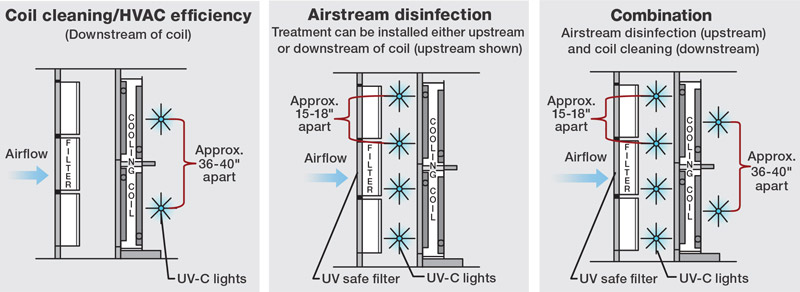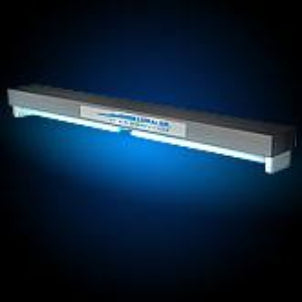UV Surface Disinfection Made Simple: Carrying Out Finest Practices for Optimum Results
UV Surface Disinfection Made Simple: Carrying Out Finest Practices for Optimum Results
Blog Article
UV Disinfection: The Cutting-Edge Modern Technology Transforming Sanitation Practices
In the realm of sanitation practices, one modern technology has emerged as a game-changer: UV disinfection. With its ability to eradicate unsafe microorganisms, this innovative modern technology is reinventing the means we come close to tidiness and hygiene. How does UV disinfection work, and what are the advantages it uses? From medical care setups to food processing, UV disinfection is making its mark in numerous sectors. In this conversation, we will discover the details of this transformative modern technology and expect its appealing future.
Exactly How UV Disinfection Functions
UV disinfection functions by using ultraviolet light to ruin or suspend bacteria, providing a highly effective and chemical-free approach of cleanliness. This innovation harnesses the power of short-wavelength UV-C light, which can harming the DNA and RNA of microbes, thus making them unable to reproduce and trigger damage.
The process starts with the setup of UV disinfection systems, which contain UV lamps that release UV-C light. These lamps are tactically positioned in areas where microbial contamination is a worry, such as water treatment plants, medical facilities, laboratories, and food handling facilities.
When microbes are subjected to UV-C light, the photons penetrate their cell walls and reach the DNA and RNA within. The high-energy UV-C photons disrupt the genetic product by creating bonds in between adjacent nucleotides, resulting in the formation of thymine dimers. These dimers prevent the bacteria from reproducing, providing them harmless.
UV disinfection is very effective against a broad range of bacteria, including microorganisms, parasites, and viruses. It is especially reliable against waterborne virus like E. coli, Giardia, and Cryptosporidium. UV sanitation is a chemical-free method, removing the requirement for possibly unsafe disinfectants and lowering the risk of unsafe sanitation byproducts.
Advantages of UV Disinfection
UV sanitation offers countless advantages in the area of cleanliness, making it a highly preferred technique for efficiently eliminating hazardous microbes. Unlike typical sanitation approaches that rely on chemicals, UV disinfection utilizes ultraviolet light to ruin the DNA of bacteria, providing them incapable to recreate and cause infections.

UV disinfection is additionally highly functional in its applications. It can be utilized in different setups, consisting of medical facilities, institutions, food processing facilities, and water treatment plants. UV sanitation systems can be conveniently integrated right into existing sanitation methods, giving an added layer of protection versus transmittable conditions.
In addition to its efficiency and convenience, UV sanitation is additionally ecologically pleasant. It does not generate any type of unsafe by-products or residues, making it a safe and lasting method for hygiene - uv surface disinfection. UV disinfection needs very little maintenance and has a long life-span, resulting in cost financial savings in the long run.
UV Disinfection in Health Care Settings
In medical care settings, UV sanitation has emerged as an innovative method for successfully removing damaging microorganisms. UV sanitation works by releasing ultraviolet light at a particular wavelength that is lethal to bacteria, infections, and other microbes.
To start with, UV sanitation is a non-chemical approach, making it an eco friendly option contrasted to standard disinfection techniques that commonly include using rough chemicals. Making use of UV light eliminates the requirement navigate to these guys for chemical disinfectants, lowering the threat of damaging residue or chemical direct exposure to both patients and medical care workers.
Furthermore, UV disinfection is very efficient in eliminating a wide variety of microbes, including drug-resistant germs such as MRSA and C. difficile. It provides a regular and trusted disinfection process, making sure that all surface areas and tools are thoroughly decontaminated, even in hard-to-reach areas.

UV Sanitation in Food Handling
The application of UV disinfection extends beyond medical care setups and discovers substantial worth in the world of food handling. uv surface disinfection. UV disinfection modern technology is becoming increasingly preferred in the food sector because of its capability to successfully eliminate hazardous pathogens and enhance food safety
Among the primary advantages of UV sanitation in food handling is its capability to target a vast array of microbes, including bacteria, infections, and mold and mildews. By making use of UV light at specific wavelengths, it is possible to disrupt the DNA and RNA of these pathogens, rendering them unable to recreate or cause damage. This technology can be used to numerous stages of the food processing chain, consisting of surface area disinfection, tools sanitation, and water therapy.
UV disinfection gives a chemical-free and non-thermal technique of sanitizing food. Unlike traditional sanitation techniques that depend on chemicals or warmth, UV modern technology does not leave any kind of residue or modify the taste, texture, or dietary worth of the food. This makes it a suitable option for markets that call for strict adherence to high quality criteria.
Additionally, UV disinfection systems are very easy to set up and operate, calling for very little upkeep. They can be integrated into existing processing lines without triggering considerable disturbances to the manufacturing procedure. In addition, UV systems have a fast therapy time, enabling for continuous processing and lowering downtime.
The Future of UV Sanitation

One area where UV disinfection is anticipated to make substantial developments remains website link in the field of health care. With the surge of antibiotic-resistant microorganisms and the need for a lot more efficient disinfection approaches, UV light has the possible to play an important role in minimizing healthcare-associated infections. UV disinfection systems can be made use of to sanitize surface areas, tools, and even the air in health care centers, helping to avoid the spread of dangerous microorganisms and enhance person security.
Another market that can gain from advancements in UV disinfection technology is the food market. UV light has actually currently confirmed to be an efficient approach for sanitizing food items and minimizing the danger of foodborne diseases. As innovation improves, we can anticipate to see much more affordable and efficient UV disinfection systems being applied in food processing plants, making certain that the food we consume is secure and without unsafe bacteria.
Conclusion
To conclude, UV sanitation is a cutting-edge innovation that is transforming hygiene methods in healthcare setups and this link food processing. By utilizing UV light to eliminate or shut down microbes, it supplies various advantages such as performance, efficiency, and safety. With recurring advancements in this area, UV sanitation holds fantastic prospective for the future of hygiene, supplying a trusted and sustainable remedy for maintaining tidy and sanitary settings.
UV disinfection is a chemical-free technique, getting rid of the need for possibly dangerous anti-bacterials and decreasing the threat of unsafe disinfection by-products.
Unlike conventional sanitation methods that count on chemicals, UV sanitation utilizes ultraviolet light to ruin the DNA of bacteria, rendering them unable to duplicate and create infections. Unlike standard disinfection methods that rely on chemicals or warmth, UV modern technology does not leave any type of residue or change the taste, appearance, or dietary worth of the food. As modern technology enhances, we can expect to see much more affordable and effective UV disinfection systems being carried out in food handling plants, making certain that the food we eat is secure and free from unsafe bacteria.
In final thought, UV sanitation is a cutting-edge innovation that is changing sanitation practices in health care settings and food handling.
Report this page